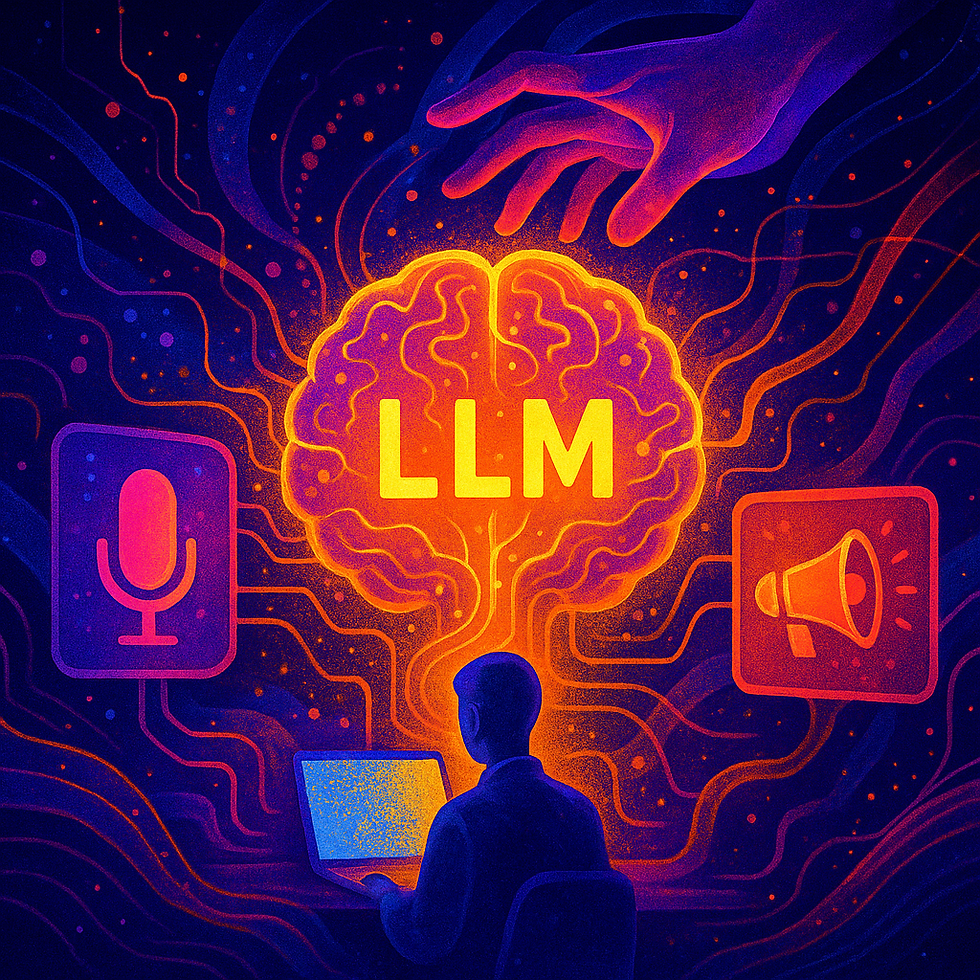
CHAT GPT, TOOLS, AUTOMATION, AI & UXR
Automate UX? Yes, Please! Why Zapier and n8n Are Real Super Tools for UX Teams
3
MIN
Jul 17, 2025
To some, that may sound like a contradiction. After all, good user experience means listening, intuition, iteration, empathy. All highly human qualities. And yet, precisely because our work is so human, we need more time for these qualities.
And less for repetitive processes, copy-and-paste, file storage or emails with calendar links.
This is where tools like Zapier and n8n come in. Both help automate routine tasks, link systems and make processes more efficient. There is enormous potential here, especially in the UX context – not only in research, but also in internal teamwork, prototyping, accessibility and reporting.
Let's take a closer look at why this is the case and what such automations can look like in practice – with lots of examples from everyday UX work.
What is Zapier, what is n8n?
Zapier is a cloud-based no-code automation platform that can connect more than 7,000 tools. The focus is on simplicity: users can build workflows, known as ‘Zaps’, without any programming knowledge. Ideal for quick solutions and very popular with agile teams that use many standard tools – from Google Forms and Slack to Notion and Trello.
n8n (‘node for node’) is an open-source alternative aimed more at technically savvy teams. It allows for more complex logic, custom nodes, even self-hosting – and, most recently, direct integration of LLMs such as GPT. This is particularly exciting for anyone who wants to customise their workflows or prefer to host sensitive data themselves.
Both systems follow the principle ‘If X happens, then do Y’. But what X and Y can mean in the UX field is far more exciting than many people think.
Typical areas of application in the UX field
Automation can be applied to almost every area of UX work. Here is an overview of typical areas that regularly take up time in many UX teams – and can be significantly streamlined with automation:
✅ Participant management for studies
Automate invitations: When someone registers in Typeform → automatically send an invitation by email with a calendar link
Generate Zoom or Teams links: and enter them directly into Google Calendar or Outlook
Reminder emails before sessions: e.g. an automated email 24 hours before the appointment
Follow-ups and incentives: thank-you email with voucher link, automatically triggered after the session ends
Manage participant data: GDPR-compliant deletion or archiving after the end of the study
✅ Data aggregation & documentation
Collect survey responses: from Google Forms, Maze or SurveyMonkey directly into Airtable or Notion
Organise transcripts: e.g. automatically save Otter.ai or Lookback links
Screenshot storage: e.g. Automatically move screenshots from usability tests to project folders (Google Drive, Dropbox)
Sort highlight reels or quotes: through tag-based automation in Dovetail or Condens
✅ Team communication & stakeholder updates
Slack notifications for new insights: e.g. ‘New findings from interview 4 are now in folder XY’
Automated status updates: Weekly summary of new research results via email
Stakeholder reminders: When a stakeholder is due to provide feedback → send automatic reminder email
Team check-ins: e.g. automatic Slack message on Mondays with open UX tasks from Jira
✅ UX metrics & reporting
KPI tracking: e.g. weekly collection of NPS, SUS or task success from various tools and storage in dashboards
Generate PDF reports: e.g. automatically generate a condensed test report from Airtable + text templates
Update dashboards: e.g. populate Google Data Studio or Power BI with automatic data feeds
More smart use cases for advanced UX teams
In addition to the classics, n8n and Zapier can also be used to build much more sophisticated scenarios – especially when it comes to team coordination, prototyping or even AI:
Integrate research sprints
Research data as the basis for stories: New hypothesis in Airtable → automatically becomes a Jira ticket including a link to the insight
UX approval process: Findings need to be reviewed before publication → workflow checks status + sends to reviewer
Sprint documentation: Research backlog updates automatically when new insights are added
Take the voice of the customer seriously
Monitor app store reviews: for specific keywords → Slack notification + automatic categorisation
Cluster Zendesk feedback: ‘confusing’, ‘not found’, etc. → tracked and tagged in UX database
Make internationalisation efficient
Automatically translate feedback into multiple languages (e.g. with DeepL API)
Generate regional dashboards: Different insights per country → separate, automated reports
Alerts & monitoring
UX warning system: If negative terms (‘slow’, ‘complicated’) accumulate in feedback → automatic alert
Monitor metrics: If a KPI value falls below the threshold → automatic message to PM team
Manage incentives
Automatically send vouchers after interviews (e.g. via Amazon, Talon.One or custom systems)
Follow-up: Whether incentives have been accepted → automated reminder processes
Accessibility and inclusive UX
Document A11y bugs: e.g. from Google Forms directly into the A11y backlog
Automate Lighthouse audits: Have URLs checked regularly → Save reports centrally
Cluster and analyse feedback from users with disabilities in a targeted manner
n8n or Zapier? When should I use which one?
Scenario | More suitable tool |
Quickly and easily connect something | Zapier |
Use many tools from the SaaS universe | Zapier |
Somewhat more complex logic (e.g., with conditions, loops, queries) | n8n |
Integrate AI functions (GPT, long chain, embeddings) | n8n |
Integrate your own systems or APIs | n8n |
Self-hosting required (e.g. due to data protection) | n8n |
Workflows should be maintained jointly within the team | n8n (better role permissions & self-hosting possible) |
UX teams with little technical experience | Zapier |
Conclusion: More time for real UX moments
Automation does not replace our UX work – it frees us up. Less copy-paste, less ‘Have you seen this yet?’, less manual report building. Instead, more time for observation, discussion, analysis and ideation.
Whether simple reminder emails or complex, AI-supported clustering workflows, tools such as Zapier and n8n help us create structure where chaos previously reigned – often without any major hurdles.
Zapier is perfect for anyone who wants to get started quickly and connect familiar tools.
n8n is for those who want to dive deeper – with individual requirements, data protection concerns or a desire for AI integration.
Both have their place. And both help you regain more time for the things that really matter in UX: listening, understanding, designing.
Tip for getting started: Find an annoying process in your everyday UX work – for example, ‘I always forget to inform stakeholders about new findings’ – and build a small automation for it. If you like, I'd be happy to help you. Because UX shouldn't just be easy for users. It should be easy for us, too.
💌 Not enough? Then read on – in our newsletter. It comes four times a year. Sticks in your mind longer. To subscribe: https://www.uintent.com/newsletter
RELATED ARTICLES YOU MIGHT ENJOY
AUTHOR
Tara Bosenick
Tara has been active as a UX specialist since 1999 and has helped to establish and shape the industry in Germany on the agency side. She specialises in the development of new UX methods, the quantification of UX and the introduction of UX in companies.
At the same time, she has always been interested in developing a corporate culture in her companies that is as ‘cool’ as possible, in which fun, performance, team spirit and customer success are interlinked. She has therefore been supporting managers and companies on the path to more New Work / agility and a better employee experience for several years.
She is one of the leading voices in the UX, CX and Employee Experience industry.






.png)













